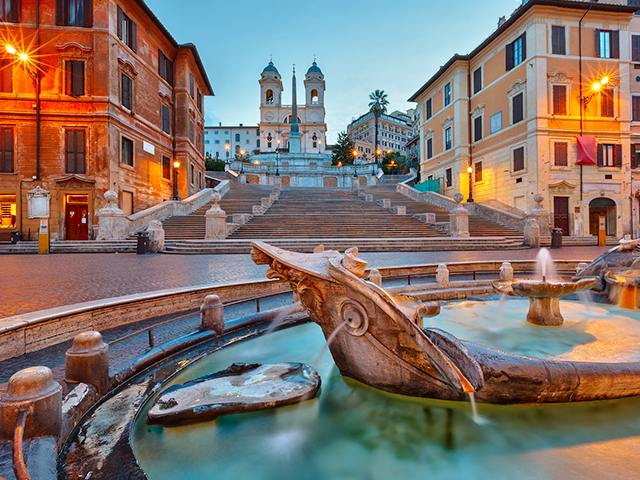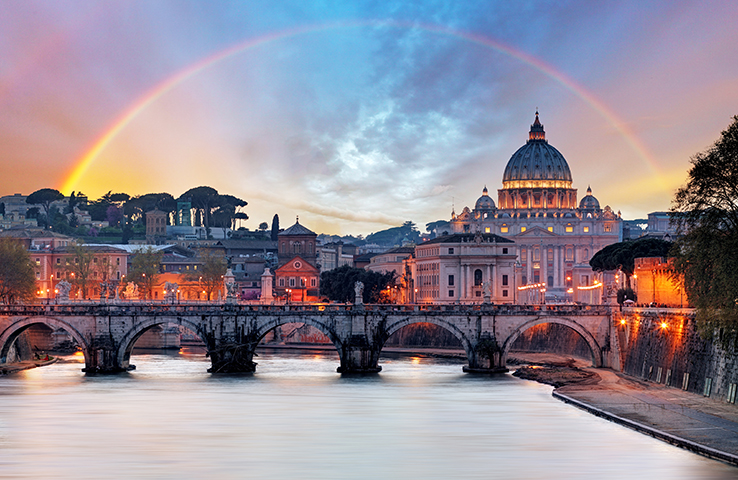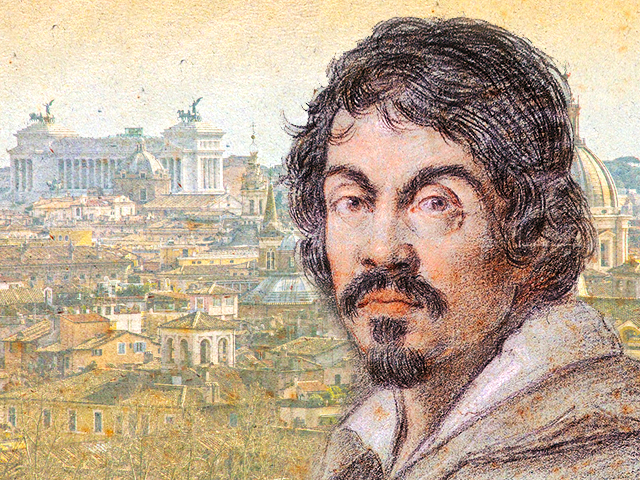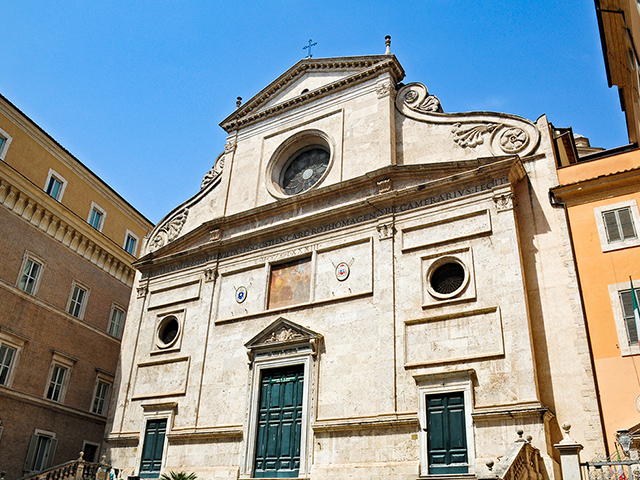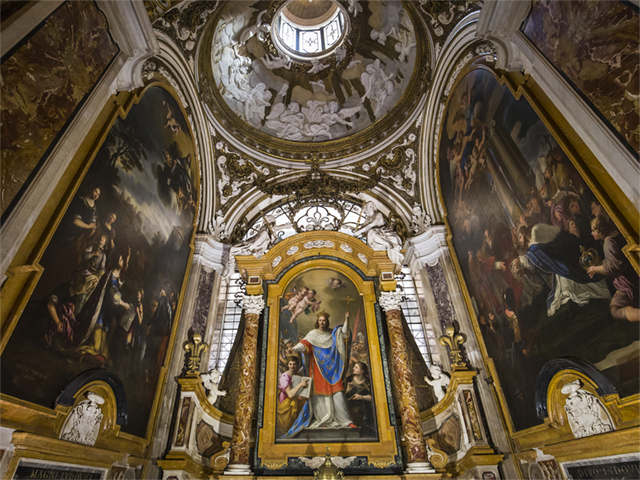Piazza del Popolo
Discovering Piazza del Popolo in Rome: how to get there, history, churches, the big obelisk and much more about one of the most famous squares in the world.Piazza del Popolo is one of the most beautiful squares in the world! With churches, fountains and the big Flaminio Obelisk, this square welcomes every day thousands of visitors, tourists and passers-by.
Arrival and starting point to visit the city center, Piazza del Popolo is the right place to spend a fun afternoon: from this square start the main shopping streets and going up the stairs you can get to the Pincio Terrace from where you can admire Rome from above in all its splendour.
Getting to Piazza del Popolo is as easy as pie! You can enter from one of the so called "trident" streets: Via di Ripetta, Via del Corso and Via del Babuino, or pass through Porta del Popolo (old Flaminia gate) that will welcome you with a Latin message engraved by Bernini in occasion of the arrival to Rome of Christina, queen of Sweden: "Felici faustoque ingressui MDCLV", that is "For a Happy and Propitious Entrance".
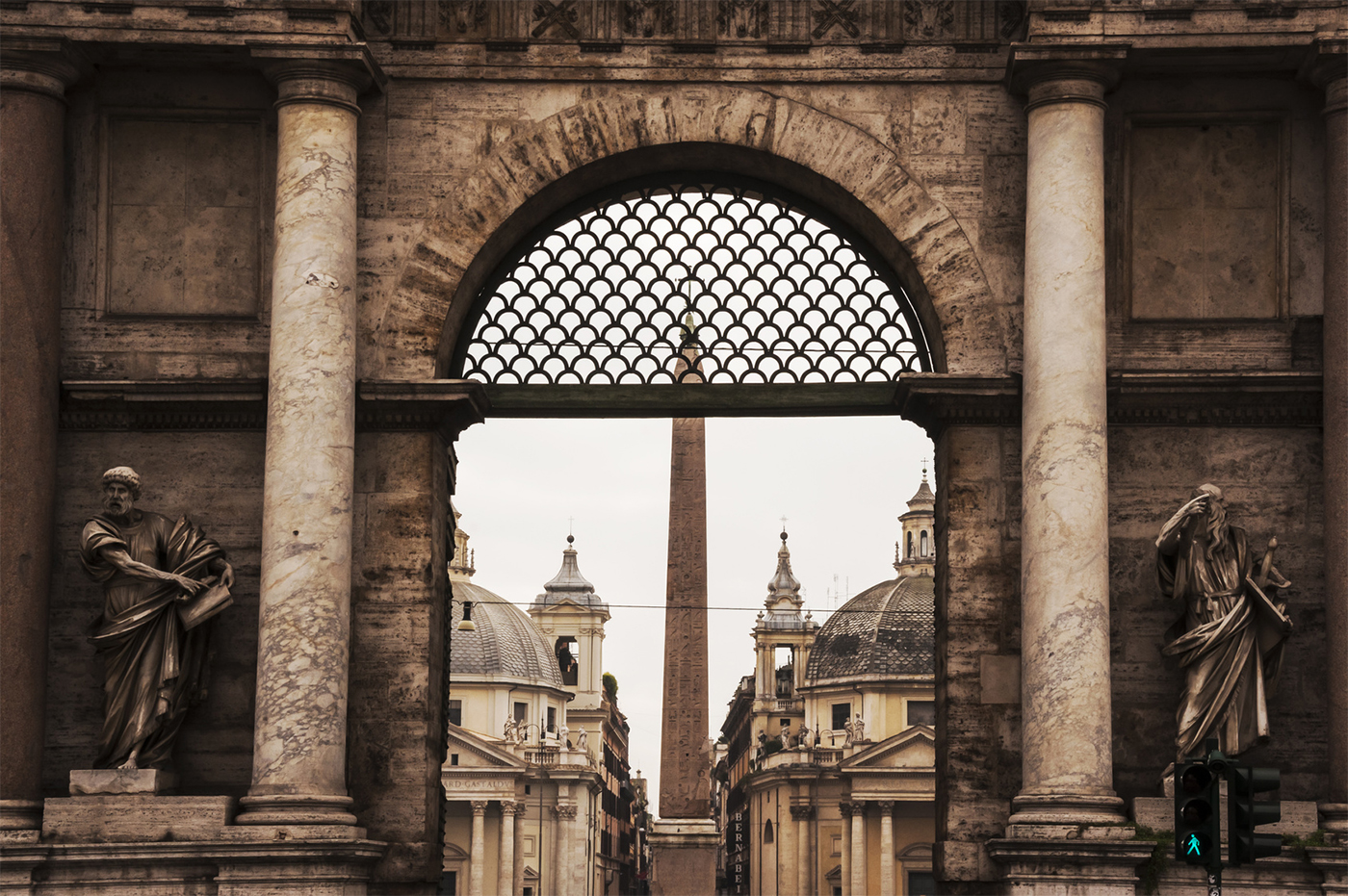
Piazza del Popolo: peeking through Porta del Popolo
The square is the result of a long series of works and restorations and it current form is due to architect Giuseppe Valadier who by the end of the nineteenth century redesigned it with the current elliptical form.
In the center of the square stands one of the biggest obelisks in Rome, from Egypt, 24 meters high and dating back to 1.200 BC. The Flaminio Obelisk was taken to Rome by Augustus and in 1589 Sixtus V had it dragged here from Circus Maximus comissioning the work to Domenico Fontana. The basins with lions were only added in 1823 by Valadier, under the papacy of Leon XII.
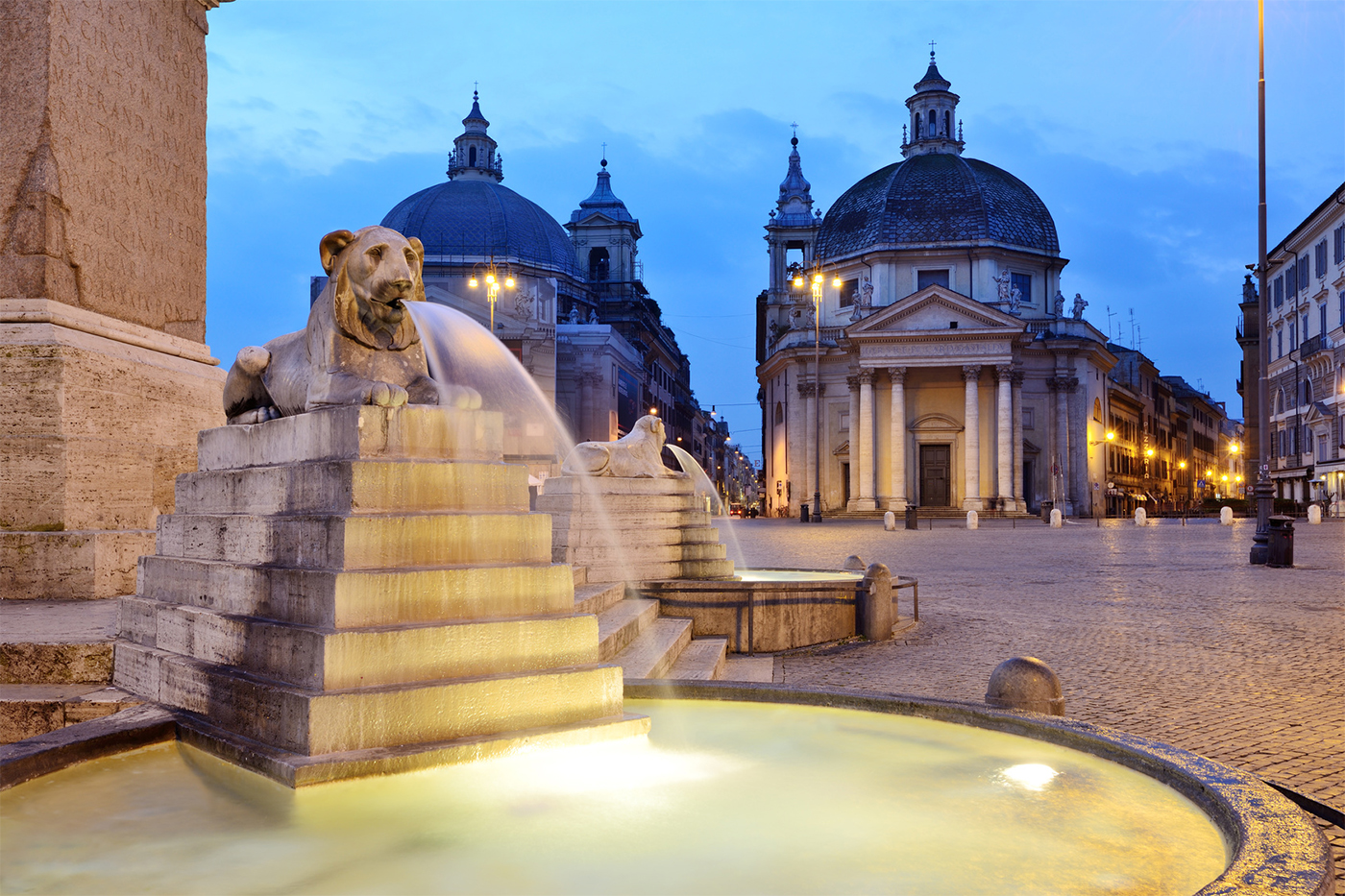
Piazza del Popolo - Particular of the basins with lions
The two extra exedras added by Valadier gave the square the current elliptical form with the two fountains located in the semicircles: the Fountain of Neptune pointed towards the Tiber river, and the fountain of the goddess Roma with the flights leading to the Pincio terrace in the back. Go ahead upstairs to enjoy a breath-taking view! The square is always wonder but if you accept a tip, it is better at dawn and at dusk.
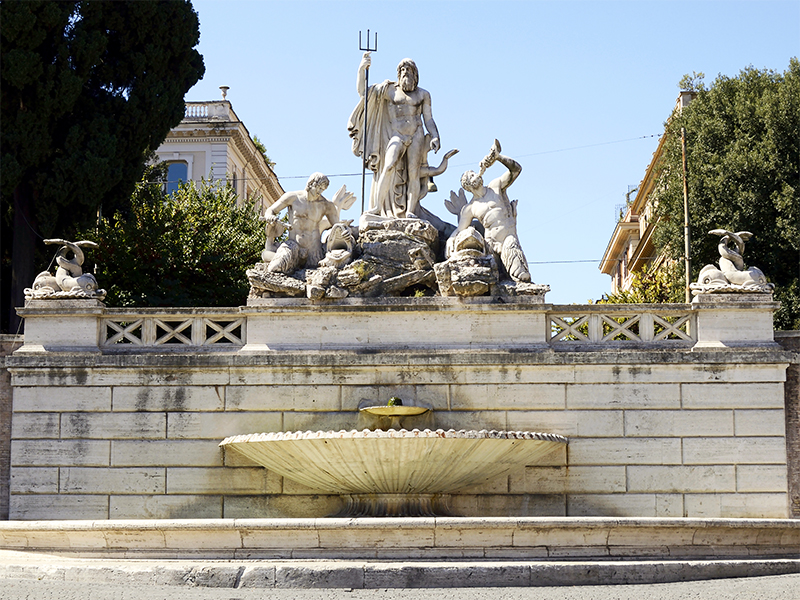
Piazza del Popolo, Fountain of Neptune - Photo by Livioandronico2013, CC BY-SA 4.0
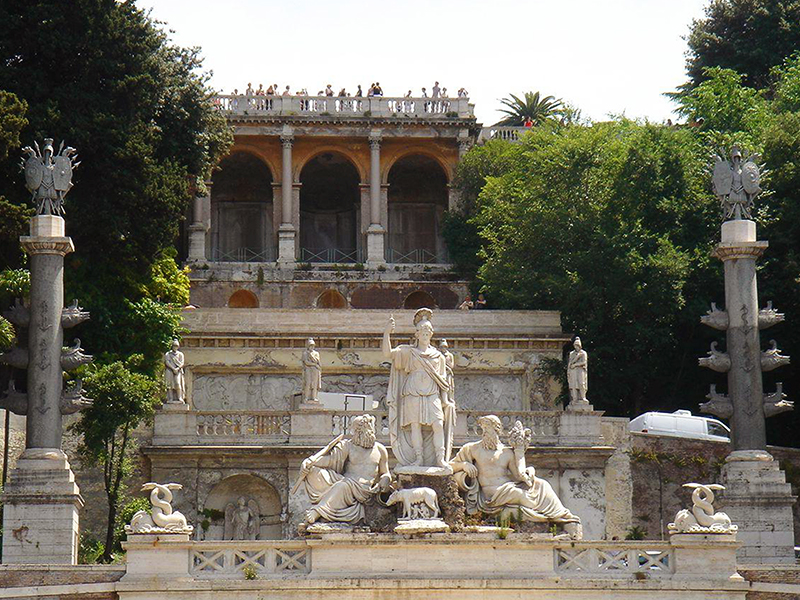
Piazza del Popolo, Fountain of goddess Roma - Wikimedia CC BY-SA 3.0
About the origin of the square name, there are different assumptions. In the past, it was believed that the name came from the many poplar trees in the area. In fact, in Latin poplar is called populus!
According to a Medieval legend, on the other hand, the spirit of emperor Nero wandered about a nut tree close to the Pincio bothering Pope Paschal II, who then ordered to uproot the tree's trunk and build in its place a church devoted to Virgin Mary. Since the church was built at the expense of the Roman people, it took the name of Santa Maria del Popolo (St. Mary of the People), name that therefore passed to the square itself.
The church contains very relevant paintings! You can admire masterpieces by Caravaggio like Conversion of Paul the Apostle e Crucifixion of St. Peter, many frescoes by Pinturicchio, the Assumption by Annibale Carracci, in additon to architectural works by Raffaello Sanzio and Bramante eand some sculptures by Andrea Bregno and Gian Lorenzo Bernini.
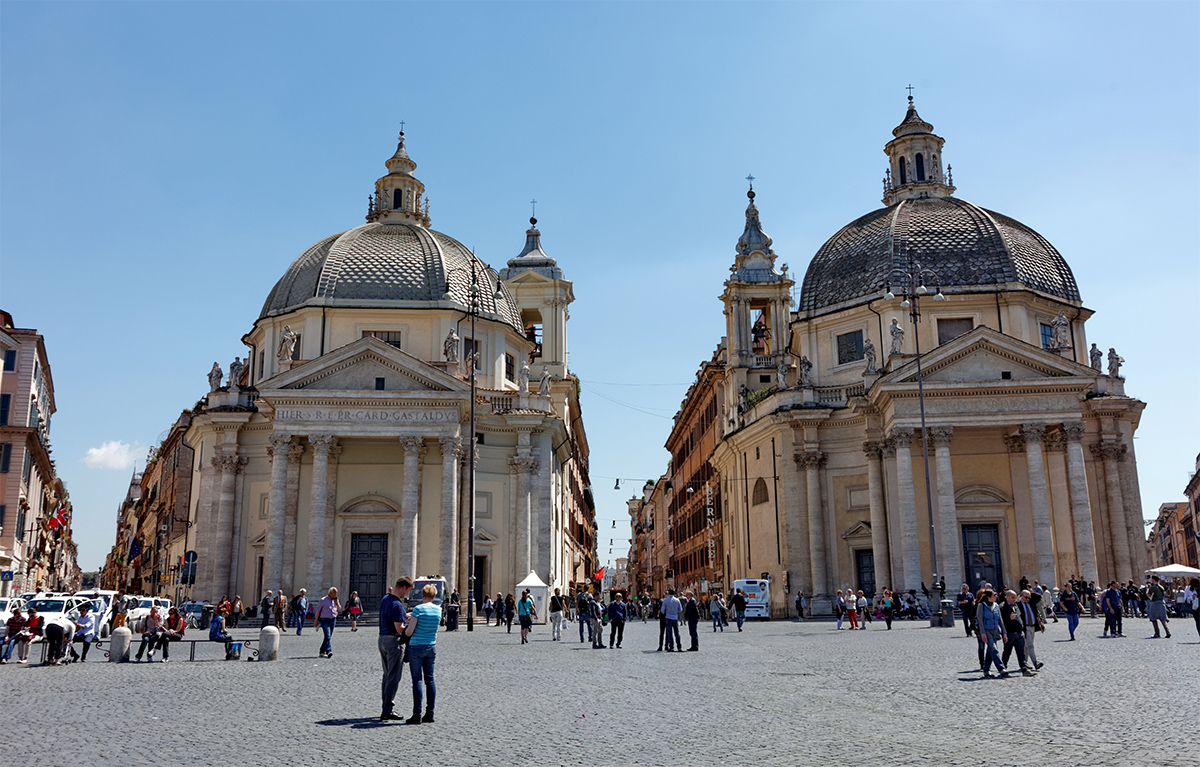
Piazza del Popolo - The twin churches of S.Maria in Montesanto and S. Maria dei Miracoli
The two twin churches of Santa Maria in Montesanto and Santa Maria dei Miracoli, instead, constitute the two focus of the trident, almost an invitation to explore the city center through the ever crowded Via del Corso, with its shops and street artists.
A curiosity: the church of Santa Maria in Montesanto is also known as Church of the Artists and since 1941 every Sunday is celebrated a mass in honour to the artists. In addition, in this church often take place funeral services of personalities related to the world of entertainment and culture.
Santa Maria dei Miracoli, instead, designed by architect Carlo Rainaldi in 1611, was finished by Bernini with the cooperation of Carlo Fontana on the initiative of monsignore Girolamo Gastaldi. Even if they look identical, actually, the dome of this church is circular, unlike the dome of the twin church Santa Maria di Montesanto, this one oval.
Our article ends here... if you still have some time, we invite you to go for a nice walk along the Corso to be welcomed into another big square of Rome: Venice Square.
Useful information
Piazza del Popolo
- HOW TO GET THERE
From the Port of Civitavecchia: to get to Piazza del Popolo go to Civitavecchia Train Station and get on the first train bound for Rome. AFter about on-hour journey, get off at Termini Station and take the subway (line A) towards Battistini for 4 stops. Get off at Flaminio - Piazza del Popolo and you'll get there shortly.
From Rome: if you are close to a metro station, your reference shall always be the line A stop Flaminio - Piazza del Popolo. From Roma Tiburtina Station, otherwise, you can take bus 490 (CORNELIA - MA) for 17 stops and get off at Piazzale Flaminio.From Roma Ostiense Station (Piramide) run only the subway lines B and B1. So you can get on the first train towards Rebibbia/Conca d'Oro (Jonio from 30th April 2015) and get off at Termini. From there, take line A towards Battistini and get off after 4 stops until getting to Flaminio. You might rather get the bus outside Piramide metro station (Ostiense) in Piazzale dei Partigiani, line 30 (CLODIO) for 7 stops takes you to the stop ZANARDELLI. From there, take the 628 (VOLPI/FARNESINA) and after 3 stops, get off at PASSEGGIATA RIPETTA. 300 further meters by walk and you'll be there.*For train timetables refer to Trenitalia.*For further information about bus timetables or routes based on where you are, refer to ATAC.- TIMETABLES
- The square is always open to public, but if you are interested in visiting the churches, opening hours are as follows:Basilica of Santa Maria del PopoloWorking days: 7.00 - 12.00 and 16.00 - 19.00Holidays: 8.00 - 13.30 and 16.30 - 19.15Church of Santa Maria di Montesanto
Monday - Friday 17.00 - 20.00 | Sunday 10.30 - 13.30
Holy Mass timetable
Monday - Friday 19.30 | Sunday Mass of the Artists 12.00Santa Maria dei MiracoliEvery day: 7.00 - 12.30 | 16.00 - 19.30Holy Mass timetable
Holidays: 10.30 - 11.30 - 12.30 - 19.00
Working days: 7.30 - 12.00 - 19.00*during the mass visiting the church is not allowed - PRICES
Free admission.



 PORT MOBILITY CIVITAVECCHIA
PORT MOBILITY CIVITAVECCHIA








